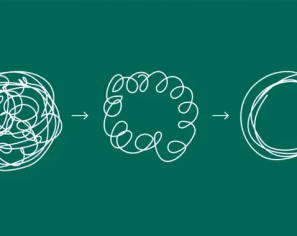August 19, 2015 | Software Consultancy
Memoization is a technique whereby we trade memory for execution speed. Suppose you have a function which
In this scenario, it may make sense to “remember” the output returned for each distinct input in a hash map, and replace function execution with a lookup in the hash map.

Here’s a utility method, memoize, which takes a function and returns a memoized function that remembers the outputs returned for previous invocations:
public final class Memoizer {
public static <I, O> Function<I, O> memoize(Function<I, O> f) {
Map<I, O> lookup = new HashMap<>();
return input -> lookup.computeIfAbsent(input, f);
}
}
This works fine provided that the function is only ever used by one thread at once; otherwise there is a risk of concurrent access to the lookup map, and it’s possible that the same input may be computed twice. If this is a problem, we can replace Map with ConcurrentMap, and HashMap with ConcurrentHashMap:
public static <I, O> Function<I, O> memoize(Function<I, O> f) {
ConcurrentMap<I, O> lookup = new ConcurrentHashMap<>();
return input -> lookup.computeIfAbsent(input, f);
}
In both cases, if the value is already in the lookup map, it is returned immediately; otherwise it is calculated by passing the key to the supplied function, placed in the map and returned. In the ConcurrentMap case, all of this happens atomically, so it is perfectly safe for multiple threads to access the memoized function at once.
Here’s an example of how to use memoized to memoize an expensive method:
public class Factorial {
private static final Function<Long, Long> CACHED = Memoizer.memoize(Factorial::uncached);
public static long factorial(long n) {
return CACHED.apply(n);
}
private static long uncached(long n) {
long result = n;
long m = n - 1;
while (m > 1) {
result = result * m;
m -= 1;
}
return result;
}
}
If you’ve seen memoization examples along these lines before, you may be wondering why the uncached method isn’t defined recursively, so that it populates (or makes use of) the cache for all values between 1 and n. The problem here is that the recursive call will take place inside the call to computeIfAbsent, and try to modify the ConcurrentMap while it is already being modified by the outer call. This is explicitly forbidden by the ConcurrentMap contract, and leads to undefined behaviour (i.e. the program hangs).
What if we want to memoize a recursive function? Two options suggest themselves:
ConcurrentMap, since the latter locks on individual hash buckets rather than globally locking the entire map during updates.Here is a thread-safe and recursion-safe implementation using a re-entrant lock:
public static <I, O> Function<I, O> memoize(Function<I, O> f) {
Map<I, O> lookup = new HashMap<>();
ReentrantLock lock = new ReentrantLock();
return input -> {
lock.lock();
try {
return lookup.computeIfAbsent(input, f);
} finally {
lock.unlock();
}
};
}
And here is uncached rewritten in a recursive style:
private static long uncached(long n) {
if (n < 1) {
return n;
}
return n == 1
? n
: n * factorial(n - 1);
}
It may be worth having two versions of memoize – one recursion-safe and one recursion-unsafe (but both thread-safe), or one thread-safe and one thread-unsafe (but both recursion-safe) – if this is likely to be a problem.
Some further points to bear in mind about this technique:
Map or ConcurrentMap object: if you memoize lots of functions, you will also be creating lots of new lookup map objects that will only be garbage collected after the memoized functions are themselves collected.Finally, here is a version of memoize where the lookup map is initialised at the outset with the complete range of input values – it will return null if called with any value that is not in the supplied range. The resulting function is thread-safe (since its access to the underlying lookup is read-only) but not recursion-safe.
public static <I, O> Function<I, O> memoize(Function<I, O> f, Stream range) {
return range.collect(Collectors.toMap(Function.identity(), f))::get;
}
Of passing interest here is the way the method reference, to Map.get, is automatically cast to a Function. This makes it possible to write the entire method body as a very compact one-liner.
This blog is written exclusively by the OpenCredo team. We do not accept external contributions.

Agile India 2022 – Systems Thinking for Happy Staff and Elated Customers
Watch Simon Copsey’s talk from the Agile India Conference on “Systems Thinking for Happy Staff and Elated Customers.”
Lean-Agile Delivery & Coaching Network and Digital Transformation Meetup
Watch Simon Copsey’s talk from the Lean-Agile Delivery & Coaching Network and Digital Transformation Meetup on “Seeing Clearly in Complexity” where he explores the Current…
When Your Product Teams Should Aim to be Inefficient – Part 2
Many businesses advocate for efficiency, but this is not always the right goal. In part one of this article, we explored how product teams can…